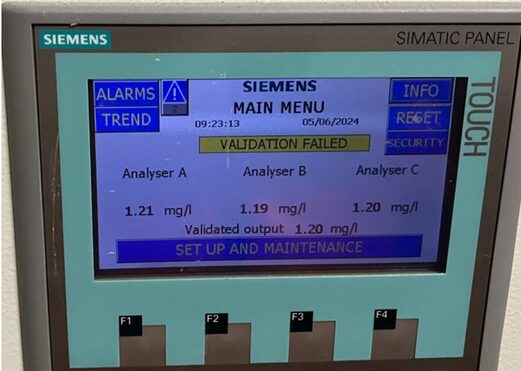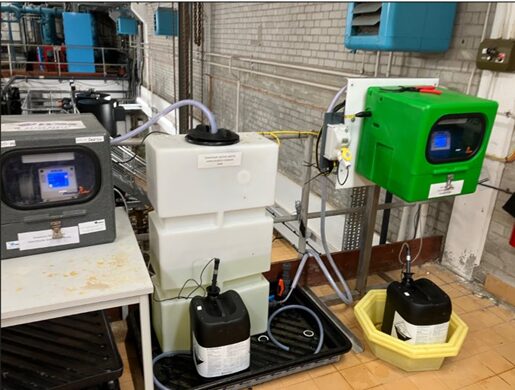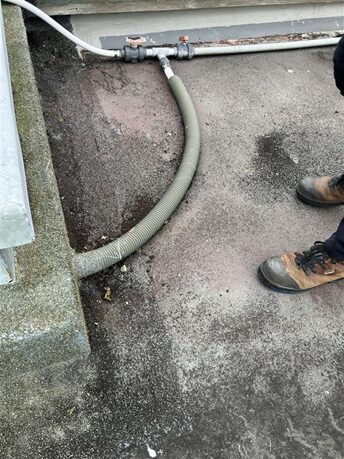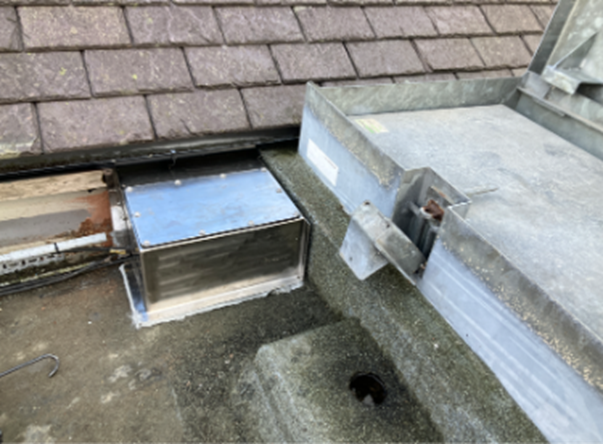- Drinking Water 2024 – Summary of the Chief Inspector’s report for drinking water in Wales
- Foreword
- Water supplies and testing
- Compliance with standards
- Learning from compliance failures
- Learning from events
- Consumer contacts
- Asset health
- Water safety planning and risk assessment
- Raw water
- Poly and perfluoroalkyl substances (PFAS)
- Audit programme
- Recommendations
- Enforcement
- SEMD
- NIS
- Materials in contact with drinking water (Regulation 31)
- Research publications
- Whistleblowers
- Working with stakeholders
- Annex A – Number of tests carried out by companies
- Annex B – Compliance with standards
- Annex C – Compliance failures and events
Audit programme
Table 14 Audits in Wales
|
DWR |
Customer call centre |
|
DWR |
On site alternative supplies provision |
|
DWR |
Felindre works and Pentre service reservoir |
|
DWR |
Drinking Water Safety Planning and Bryn Cowlyd site audit |
|
HDC | Sugn y Pwll, Bronwylfa, Higher Berse, and Gronwen service reservoirs |
|
DWR |
Cwellyn works |
|
DWR |
Pen y bont works |
|
DWR |
Air Valves |
|
HDC |
Air Valves |
Customer call centre
An audit of the Dŵr Cymru Welsh Water consumer call centre was conducted on 25 March 2024. The stock phrase used in response to discolouration contacts contained contradictory clauses suggesting the water was safe to drink but that the company would not expect the consumer to drink it. This could be interpreted as tacit ‘do-not-drink’ advice and the company has since revised the wording of this stock phrase to allay consumer concerns whilst investigations are undertaken. The existing data capture software used by the company can record a primary and a secondary descriptor. It cannot capture discrete multiple descriptors in compliance with Information Letter 04/2022 except through the contact narrative text. Companies are reminded of the requirement to capture data on all descriptors detailed by the consumer during a contact.
Felindre works
An audit of Dŵr Cymru Welsh Water’s Felindre works in South Wales was conducted in June 2024. Recommendations were made regarding the management of the site’s granular activated carbon adsorbers (GACs), removal of an online water quality monitor from service, GAC clean backwash tank defect resolution, a lack of triple validated monitor visibility and alarms on SCADA, password hygiene and other security arrangements. Of the site’s 12 GACs, six had exceeded the site-specific regeneration frequency of nine years. Evidence was provided to demonstrate sufficient adsorbance capacity through the provision of the most recent spent and newly regenerated media iodine numbers. Companies are encouraged to monitor suitable media exhaustion proxies at regular intervals for each adsorber in service to ensure adsorbance capacity is sufficient for all raw water loading scenarios. The site flow cap set-points were such that the minimum empty bed contact times for all water quality parameters stated in company documentation were not achievable in all operational circumstances. Site flow control philosophies should be assessed to ensure the minimum carbon contact times (GAC and PAC) defined by company procedures are accounted for. A system validation alarm for the triple validated disinfection chlorine monitors was noted on the periodically checked local human machine interface (HMI) during the site walk-around (Image 18). The alarm had been generated by an ephemeral drift from set-point of one of the chlorine monitors and was not evident on the site SCADA system. Companies should ensure that all alarms relating to disinfection control are captured by associated apprehension systems to ensure site operators address any defects as soon as is practicable. The storage of sodium hypochlorite used in a temporary dosing arrangement was found in a room without temperature controls and final water chlorate sampling had not been organised (Image 19). Companies are reminded of the requirement for all sodium hypochlorite to be stored in accordance with the requirements of BS EN 901:2013 and to monitor associated byproducts in dosed water. A handwritten note with a historic site SEMD password was found in the site control room. Companies are reminded of the importance of password hygiene to ensure such security measures are effective.
Image 18 Chlorine HMI

Image 19 Temporary hypochlorite arrangement

Cwellyn works
An audit at Dŵr Cymru Welsh Water’s Cwellyn works was conducted in August 2024, as part of the Inspectorate’s risk-based audit programme. The works gained national attention in 2005 when it became the centre of a Cryptosporidium outbreak, resulting in 231 confirmed cases of cryptosporidiosis and subsequent legal action against the company. In response, the treatment works underwent substantial upgrades, including the installation of ultraviolet treatment for Cryptosporidium inactivation.
The 2024 audit focused on the work’s disinfection processes and policy. Following the review, seven recommendations were made to the company, addressing chemical dosing, security measures, and improvements to its disinfection policies.
A key concern raised during the audit was an unprotected sample line entering the contact tank through a hatch, posing a potential security risk. While the company has acknowledged the issue and documented it in its risk register, no action had been taken to mitigate the risk until it was flagged by inspectors during the audit.
Image 20 Unprotected sample line on contact tank roof

A full resolution could not be implemented while the contact tank remained in supply, necessitating significant engineering works to enable corrective measures. Following the audit, a temporary repair was introduced to enhance security arrangements while plans for the tank’s removal were developed. The company was recommended to review its procedures, escalation processes, and governance framework to ensure that similar issues and potential resolutions are identified more effectively in the future. Additionally, a recommendation was made to reassess the risk evaluation methodology to better integrate security risks into the overall assessment process, ensuring they are appropriately documented and addressed where relevant.
Image 21 New temporary repair to provide protection for sample line

Although Cwellyn works has not yet experienced taste and odour issues in distribution, the company has encountered such concerns at other surface water sites in recent years. There is currently no specific treatment process at this site, for removing taste and odour compounds such as 2-methylisoborneol (MIB) or geosmin, though biological activity in the filters may provide some mitigation. A recommendation was made for the company to review its short, medium, and long-term strategies to minimise this risk and establish contingency plans. These plans should ensure a proactive response to prevent an escalation of related risks, including taste, odour, and the presence of MIB and Geosmin.
With climate change increasing the likelihood of extreme heat events and drought, companies must regularly reassess their risk assessments and plan their response measures to remain resilient in the face of evolving environmental challenges.
Penybont works
Four events occurred at Dŵr Cymru Welsh Water’s Penybont works involving elevated turbidity within the disinfection process across 2023 and 2024. Each event involved the management of turbidity risks within a rising main from the site to an offsite distribution cum contact tank. A reactive audit of the site was conducted in September 2024 in response. Several risk factors were identified during the visit with recommendations made. The company has since installed a turbidity monitor at the inlet to the tank and a downstream diversion to waste facility to enable containment and disposal of water where required. A weekly conditioning programme for the main has also been initiated to mitigate the further build-up of sediment. Enforcement action has also been taken in the form of company-wide notices to deliver improvements in disinfection process management processes.
Air valves
All Welsh companies were subject to an industry-wide audit of their air valve management practices.
Both Hafren Dyfrdwy and Dŵr Cymru Welsh Water use the Water Industry Mechanical and Electrical Specifications (WIMES) 8.09 document to inform asset standards for company air valves. This industry standard provides the opportunity for deviation from manufacturer recommendations regarding original design function and ongoing performance management. Where equipment is installed within supply systems it is critical that manufacturer guidance is followed to ensure ongoing satisfactory performance. Failure to do so represents a risk to both operability and water quality.
The records kept to demonstrate compliance with industry standards for air valves were in many cases unavailable. In addition, records of reactive remedial works following identification of defects during air valve inspections were unavailable. Companies are reminded that good record keeping is essential in the demonstration of effective risk management. The companies have and are reassessing the risks to water quality posed by air valve management and the relative risks associated with different applications and locations. To this end, new inspection and maintenance regimes based on this assessment have been and are being formulated. The Inspectorate welcomes this approach and encourages the companies to reflect on these assessments, inspection methods and regimes to improve the management of these risks.
Service reservoirs
The wider industry and Wales were both audited to understand the health of network water storage assets. A Dŵr Cymru Welsh Water service reservoir was audited in June 2024 as part of the water treatment works audit. Four Hafren Dyfrdwy service reservoirs were audited in August 2024, attracting seven recommendations regarding documentation of company site audits (two), sodium hypochlorite storage conditions, sampling arrangements at ebb/flow service reservoirs, air valve inspection records, sampling facilities, and the risk assessment categorisation of a membrane in use in excess of its asset life. In addition, ten suggestions were made across these four sites.
